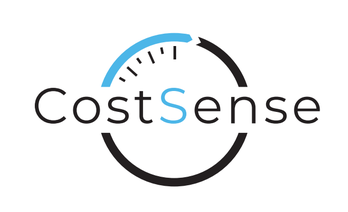The Motivation for Change:
Many small and medium-sized businesses I worked with initially chose cash accounting for its simplicity—recording income when cash was received and expenses when paid. This method worked well in the early stages when operations were straightforward. However, as these businesses grew and took on larger clients with longer payment terms (30, 60, or even 90 days), cash accounting no longer provided an accurate financial picture.
The main issue was the disconnect between work performed and the timing of payments. Businesses struggled to forecast cash flow because cash accounting showed irregular spikes and dips that didn’t reflect the steady flow of operations. This also caused problems when managing long-term projects, where revenue would be recorded at project completion, but expenses were spread out over months. The result was misleading profit reports, making it difficult to assess the true financial health of the business.
These challenges highlighted the need for a more accurate reporting method—one that matched revenue with the expenses incurred to generate it. Accrual accounting became the solution, providing a clearer view of long-term profitability and helping businesses make more informed decisions.
The Transition Process:
The transition process requires careful planning and coordination to ensure a smooth shift.
Here’s how we approached the transition to make it as seamless as possible.
Step 1: Assessing the Existing Financial Systems
The first step was to thoroughly assess the businesses’ current accounting practices, especially their handling of income and expenses. We looked at how invoices were being managed, how long clients took to pay, and what kind of expenses were being tracked. This gave us a clear understanding of where the gaps were and what adjustments would be needed for the shift to accrual accounting.
Step 2: Managing Accounts Receivable and Payable
A critical change in moving to accrual accounting is recognizing income when it is earned, not just when the money is received. This required setting up a system for tracking accounts receivable more accurately. We implemented tools and processes that allowed the business to track outstanding invoices in real time.
On the other side, expenses also had to be tracked more diligently. Rather than recognizing expenses when cash was paid, accrual accounting required us to record them when they were incurred, even if the payment was made later. This meant establishing a more robust accounts payable system to keep track of when expenses were actually related to business operations.
Step 3: Adjusting the Financial Statements
Once the accounts receivable and payable systems were in place, the next step was adjusting the financial statements to reflect the accrual accounting method. For many businesses, this involved reclassifying certain transactions and ensuring that revenue and expenses were matched properly.
Step 4: Training Staff and Introducing New Tools
For businesses with internal accounting teams, the shift required training staff on the new processes. Accrual accounting demands more attention to detail and timing than cash accounting, so we made sure to introduce the right accounting software tools to automate as much of the process as possible. Training sessions focused on how to manage invoices, record expenses, and adjust financial reports accurately.
Step 5: Gradual Implementation and Regular Review
Rather than flipping the switch overnight, many businesses I worked with opted for a gradual transition. We started by applying accrual accounting to key areas of the business first—like large projects or high-value clients—before expanding it to all operations. This allowed the businesses to adjust to the new system without overwhelming their teams.
Throughout the transition, regular financial reviews were conducted to ensure that the accrual method was being implemented correctly. This also provided an opportunity to fine-tune the process and make any necessary adjustments before fully committing to the new system.
Challenges and Lessons Learned:
Switching from cash to accrual accounting, while beneficial in the long run, came with its share of challenges for the businesses I worked with.
Challenge 1: Adapting to New Systems and Complexity
For businesses used to the simplicity of cash accounting, the shift to accrual meant handling more detailed records. Tracking income and expenses based on when they were earned or incurred required more precision.
The solution? Implementing accounting software to automate much of the process and training staff on how to navigate the more complex system efficiently.
Challenge 2: Reclassifying Past Transactions
Reclassifying previous transactions was time-consuming, especially for businesses with years of financial data. To ease the burden, we took a phased approach, focusing on critical areas first, and worked closely with accountants to ensure accuracy.
Challenge 3: Staff Learning Curve
Accrual accounting’s increased complexity required staff to adjust their methods. We tackled this with targeted training, guides, and continuous support during the transition to help employees confidently manage the new system.
Challenge 4: Cash Flow Confusion
Businesses initially experienced confusion over cash flow, as accrual-based profits didn’t align with cash on hand. We addressed this by providing both cash flow forecasts and accrual-based financial statements, helping owners understand the differences and maintain stability.
Lessons Learned:
Gradual Implementation Is Key
Implementing accrual accounting in phases helped avoid overwhelming the businesses and their staff. By starting with key areas, we were able to minimize disruption and fix issues as they arose.
Training and Support Make All the Difference
Ongoing training and accessible support were critical to ensuring the transition went smoothly. Staff confidence improved significantly when they had a clear understanding of the new processes and systems.
Automate Wherever Possible
Introducing the right software tools made the transition easier by reducing the manual work required to track accruals. Automation was essential for tracking receivables and payables accurately.
Maintain Cash Flow Awareness
Cash flow forecasting alongside accrual accounting helped businesses maintain financial stability during the transition, avoiding panic over temporary profit discrepancies.
Benefits for the Businesses:
Switching to accrual accounting gave the businesses I worked with significant advantages:
Accurate Financial Insights
Accrual accounting provided a clearer view of their true financial health by aligning revenue with expenses. This allowed for more reliable profit assessments and improved forecasting.
Better Decision-Making
With accurate financial data, businesses were able to make informed decisions about hiring, pricing, and investment. The ability to see long-term profitability helped guide strategic planning.
Matching Revenue with Expenses
By recording revenue when earned and expenses when incurred, accrual accounting removed the misleading spikes and dips caused by cash accounting. This consistency offered a more stable view of performance.
Enhanced Financial Control
Accrual accounting gave businesses long-term clarity, helping them plan for future expenses, manage receivables, and allocate resources more effectively. This control supported sustainable growth and smarter financial management.
Tips for Business Owners:
Start Small
Begin by applying accrual accounting to a specific area, like large projects or key clients, to ease into the transition without overwhelming your team.
Work with a Professional
Consult an experienced accountant to guide the process, help with reclassifying transactions, and ensure compliance.
Use Accounting Software
Choose accounting software that supports accrual accounting to automate tracking receivables, payables, and revenue recognition for accuracy and efficiency.
Train Your Team
Ensure your staff understands how to manage invoices and expenses under accrual accounting, providing proper training and support during the transition.
Monitor Cash Flow
While accrual accounting improves long-term insights, keep an eye on cash flow to maintain daily liquidity and ensure smooth operations.
Be Patient
Allow time for your team to adjust and be prepared for a learning curve. The benefits of accrual accounting will come with persistence.
Stay proactive. Stay informed. Stay financially healthy.
— Slava

About the Author
Slava Tkachev, CostSense Owner & CEO
Slava Tkachev is an accomplished CFO & Financial Controller with 15+ years of extensive experience across industries, within both large corporations & small businesses. Slava holds two esteemed accounting designations: Chartered Professional Accountant (CPA) in Ontario & Certified Management Accountant (CMA) in the USA. Have questions?
Phone: (905) 650 – 3614 Email: [email protected]
Looking for more? Subscribe to our newsletter here and sign up for a free financial health check here.


